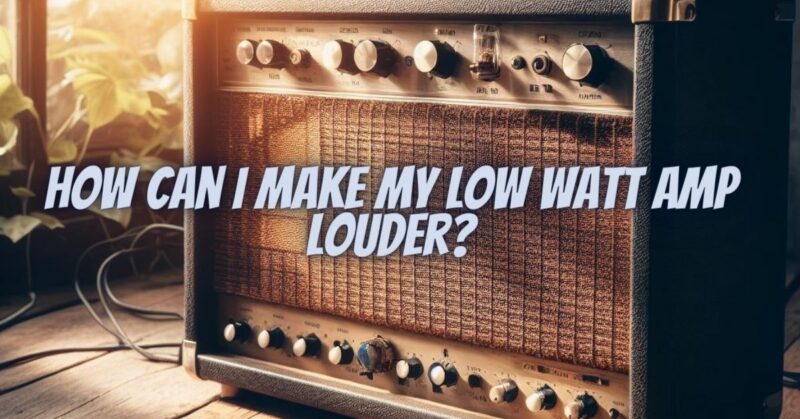Low-wattage amplifiers are popular for their portability, affordability, and often remarkable tone. However, sometimes you might find that your small amp doesn’t quite cut through the mix or provide enough volume for your needs. The good news is that there are various strategies and tools you can use to make your low-watt amp louder without sacrificing tone quality. In this article, we’ll explore these techniques to help you get the most out of your compact amplifier.
- External Speaker Cabinet
One of the most effective ways to increase the volume of your low-watt amp is by connecting it to an external speaker cabinet. Many small amps come with built-in speakers that may not be as loud as you’d like. Adding an external cabinet with larger speakers can significantly boost your amp’s volume and projection. Make sure your amp’s output matches the external cabinet’s input impedance for optimal results.
- Upgrading Your Amp’s Speaker
If you want to stick with the internal speaker of your low-watt amp, consider upgrading it. High-quality, efficient speakers can make a noticeable difference in volume and overall sound quality. Consult the manufacturer’s guidelines or an experienced technician to ensure compatibility and proper installation.
- Attenuators
An attenuator is a device that sits between your amplifier’s output and the speaker, allowing you to reduce the amp’s volume while still driving the tubes hard for that desirable tube saturation. This means you can crank up your low-watt amp’s volume for a saturated tone at manageable listening levels. Be sure to choose an attenuator that matches the power rating of your amplifier.
- Boost and Overdrive Pedals
Using boost and overdrive pedals is an effective way to push your low-watt amp into overdrive at lower volume levels. These pedals can add gain and volume to your signal, allowing you to achieve a louder and more saturated tone without increasing the amp’s output volume. Experiment with different pedals to find the one that best complements your amp’s sound.
- Preamp Pedals
Preamp pedals are designed to emulate the characteristics of various amplifier models. By running your low-watt amp through a preamp pedal, you can achieve the sound of a higher-wattage amplifier without the need for a larger, louder amp. These pedals often offer volume control, allowing you to increase your amp’s volume significantly.
- EQ and Tone Tweaking
Careful EQ adjustments can help your low-watt amp cut through the mix better. Boosting the mids and highs can give your sound more presence and clarity. Additionally, experimenting with different tone settings on your amp can help you find a balance between volume and tone that suits your preferences.
- Mic Placement and PA System
When playing live or in a recording situation, consider miking your amplifier and running it through a PA system. This allows you to control the volume independently and can result in a more balanced and controlled sound, especially in larger venues.
- Volume Control on Your Guitar
Don’t overlook the volume knob on your guitar. Rolling it back can clean up your tone and reduce overall volume when needed. This simple technique can be especially effective when combined with boost or overdrive pedals.
Making your low-watt amplifier louder is achievable with a combination of techniques and tools. Whether you choose to invest in external speaker cabinets, upgrade your amp’s speaker, use attenuators, employ pedals, or adjust your EQ settings, it’s important to experiment and find the solution that best suits your playing style and needs. Remember that the goal is not just to increase volume but to maintain or enhance your amp’s unique tone and character while achieving the desired volume level. With some patience and experimentation, you can unlock the full potential of your low-watt amp and confidently play in a variety of musical settings.


